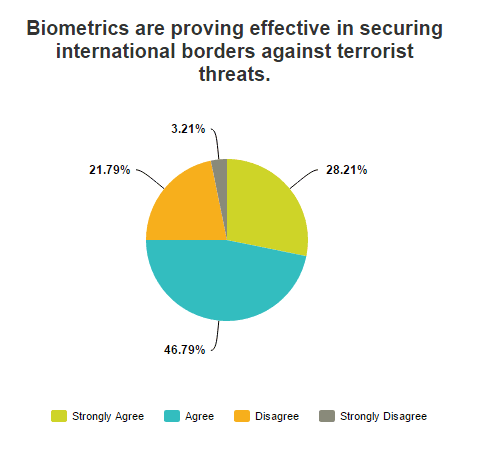 Last year, the border control markets continued to show promise of rapid growth. Reports from Acuity Market Intelligence painted the picture of a booming ABC eGate and APC kiosk market, and Frost & Sullivan forecasted that airport passenger screening tech is on track to hit $1.63 billion by 2020.
Last year, the border control markets continued to show promise of rapid growth. Reports from Acuity Market Intelligence painted the picture of a booming ABC eGate and APC kiosk market, and Frost & Sullivan forecasted that airport passenger screening tech is on track to hit $1.63 billion by 2020.
A great deal of this growth will inevitably come down to the demand for passenger convenience at the airport. For over a decade, the inconvenience of air travel has been the butt of many a standup comedy routine. But it can’t be denied that the integrity of security is also of incredibly high importance, especially given the state of international terrorism.
As part of our 13th annual Biometrics Year in Review we gauged the opinions of our respondents in this area. Just how effective do professionals familiar with identity management think biometric border control solutions are against terrorism?
Here’s what they had to say:
Over a quarter of respondents strongly agree that biometrics are effectively securing borders against terrorist threats. Nearly half agree but see room for improvement, while the remaining fourth disagree (some of them strongly so).
 The results here are interesting. There is certainly an intention for biometric border control solutions and initiatives to protect against foreign terrorist threats but even now, at the dawn of 2016, we are seeing slow progress when it comes to the adoption of biometrically secured borders. Progress is being made, but it has been a long time coming.
The results here are interesting. There is certainly an intention for biometric border control solutions and initiatives to protect against foreign terrorist threats but even now, at the dawn of 2016, we are seeing slow progress when it comes to the adoption of biometrically secured borders. Progress is being made, but it has been a long time coming.
For the industry’s part, biometrics and identity organizations have been vehement in their calls for better border control. As the In the wake of the November 13 terrorist attacks in Paris, both the IBIA and SIBA lobbied in favor of biometrics at international borders. In the former’s case, the IBIA issues an in-depth statement supporting the US government’s efforts in tightening up the visa waiver program. SIBA, meanwhile, urged biometrics be employed in refugee claimant screening.
Regarding that last point, in Europe, the Schengen nations are taking border security very seriously. In 2015, new Schengen visa requirements mandated that applicants from various nations would be required to enroll their biometrics. Faced with the migrant crisis, many Schengen participants have also implemented temporary border controls. Under article 26 of the Schengen Borders Code, nations in the region can implement border controls for spans of two years, but Germany, along with a group of other countries, is pushing to extend that period. Still, controversial as always, Greece is showing resistance to implementing controls at its own borders, a move that has elicited threats of Schengen exclusion.
 Overall though, we are seeing the trends continue in favor of biometric border control markets, particularly with an eye to locking down airports and keeping tabs on visa holders. Just this year we have started to see progress in the long awaited biometric exit program in the United States, which can help identify visitors who have overstayed their visa. We have also seen an increased use of facial recognition for airport security purposes, and biometric tracking has been implemented in refugee centers in order to assuage concerns of dangerous persons exploiting the goodwill of host nations.
Overall though, we are seeing the trends continue in favor of biometric border control markets, particularly with an eye to locking down airports and keeping tabs on visa holders. Just this year we have started to see progress in the long awaited biometric exit program in the United States, which can help identify visitors who have overstayed their visa. We have also seen an increased use of facial recognition for airport security purposes, and biometric tracking has been implemented in refugee centers in order to assuage concerns of dangerous persons exploiting the goodwill of host nations.
Biometric border control, in terms of protecting nations against terrorist threats, has the majority of our respondents’ confidence and is continuing to be deployed. Despite the inevitable blips and barriers along the way, biometrics at the border are continuing to see trials and full deployments thanks to the many benefits they bring beyond security. Indeed, every time biometrics are deployed to make travel easier for the common passenger, border crossings tend to get a little bit safer too.
*
Stick with FindBiometrics throughout January as we bring you more results from our 13th annual Year in Review. Be a part of the conversation by following us on Twitter and tweeting with the hashtag #FB2015.
—
January 27, 2016 – by Peter B. Counter



Follow Us